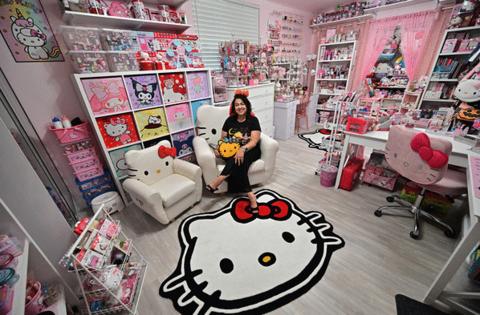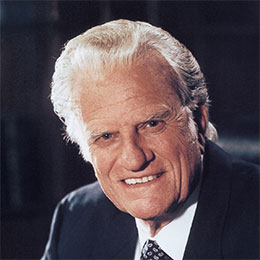Column: Hello Kitty's looking pretty at 50 (and worth more than ever)
Published in Lifestyles
Hello Kitty is famously the height of just five apples. But these days, the more striking statistic is that she’s worth more than ¥1 trillion — or $6.5 billion.
Stock in Japan’s Sanrio Co. hit that milestone for the first time recently, just weeks before the company’s feline star turned 50. Kitty White was born on Nov. 1, 1974, when she first appeared on a vinyl coin purse that quickly helped her became a national sensation in Japan.
Half a century later, she’s not just big business in Sanrio’s home country: Hello Kitty is the second highest-grossing media franchise in the world, according to TitleMax, earning more than the likes of Harry Potter or Star Wars.
Sanrio was one of the pioneers of content licensing, placing Kitty on everything from Pez dispensers to computer mice, and tying up with brands from Nike to Gucci. You can find her everywhere: throwing out the first pitch at a Los Angeles Dodgers baseball game earlier this year as part of a special Kitty-themed night, no doubt to piggyback off the achievements of superstar Shohei Ohtani; or appearing on official Japanese government videos explaining the country’s net zero carbon-reduction goals.
Designed by Yuko Shimizu, a then-24-year-old illustrator who left Sanrio just two years later, Kitty was instantly a tremendous success. But her broader appeal is more recent. After a decline in the brand in the late 1980s, Sanrio shifted its strategy to appeal to a wider age group, including adults — helping her become the international face of kawaii, the Japanese concept of cuteness that has since become a global trend.
Pop stars from Lady Gaga to Bruno Mars have embraced this movement, as well as Kitty herself. When I first came to Japan in the early 2000s, kawaii was omnipresent but still little understood overseas. The internet has since supercharged it, helping both kawaii and Kitty reach a far broader audience.
Kitty’s appeal is often attributed to her expressionless, mouth-free face, which is said to allow fans to project their own feelings onto her. Dutch author and illustrator Dick Bruna thought it a rip-off of his similarly inscrutable bunny Miffy, and once sued Sanrio.
Biographies describe her as having been born and raised in London, a glamorous location for Japanese people in the 1970s, where she lived with her family, including her often-overlooked twin sister, Mimmy, and her pet cat, Charmmy Kitty. (No, that’s not a typo.) And when she grows up, Kitty wants to become a poet or a pianist.
How about a movie star? That’s next on Kitty’s lands to conquer, after Sanrio’s 2019 announcement of a partnership with Warner Bros. for a motion picture based on the brand, described as a “hybrid of live action and anime.” Sanrio confirmed earlier this month that the movie is still in its plans, though hasn't given a release date. That could be the key to diversifying Kitty’s revenue stream — and making her the most valuable media property in the world. Pokémon, the only franchise valued higher by TitleMax, has a far more varied stream of contributions, including games, live-action and animated movies as well as TV series. Kitty, by comparison, is limited almost exclusively to merchandise. A film to match the success of what the 2023 Barbie movie did for Mattel Inc., or The Super Mario Bros. Movie has for Nintendo Co., would change that.
The movie deal also includes other Sanrio characters, such as My Melody and Gudetama, that remain less well-known outside Japan. Nonetheless, they are increasingly contributing, along with the likes of Aggretsuko, the long-suffering metal-music-enjoying red panda featured in a popular Netflix Inc. series, reducing Sanrio’s dependency on the half-centenarian icon. Nearly 15 years ago, the New York Times fretted Kitty “may be running out of product lives,” and while that prediction was wide of the mark, it’s true the company has long struggled with a succession of booms followed by busts.
Just as Nintendo is seeking to escape the peaks and troughs of the console cycle, so too is Sanrio trying to smooth out its fortunes. Questions were asked when Sanrio appointed Tomokuni Tsuji, the grandson of founder Shintaro Tsuji, as chief executive officer at just 31 — some 14 years younger than Kitty herself, and then the youngest head of a major Japanese listed company. Tomokuni’s father, Kunihiko, had been groomed to take over but died unexpectedly in 2013. While Shintaro was a visionary, by the 2010s he was in his 80s, and the company was languishing with six successive years of declining sales.
The younger Tsuji has turned around those fortunes in a remarkably brief time, importing dozens of new hires from outside the company, lowering the average age of Sanrio’s management, and embracing digitalization through video games and apps using its intellectual property. That has helped the company’s stock rise more than 10 times from the Covid-era low of March 2020.
As much as the business is diversifying, none of that would be possible without its most famous asset. But it would be remiss of me to fail to address the most long-standing debate over Kitty, which crops up every few years: Is she a cat or, in fact, as executives sometimes say, a little girl?
Fans seem to react badly to the suggestion Kitty’s not feline. The company now appears to be reaching for strategic ambivalence, with Tsuji recently telling the BBC that “Hello Kitty is Hello Kitty and she can be whoever you want her to be” — even your mother or yourself.
Maybe then she simultaneously is and isn’t a feline — Schrödinger’s Kitty, perhaps? Regardless, she’s not only still pretty at 50 — she’s more vital than ever.
____
This column does not necessarily reflect the opinion of the editorial board or Bloomberg LP and its owners.
Gearoid Reidy is a Bloomberg Opinion columnist covering Japan and the Koreas. He previously led the breaking news team in North Asia, and was the Tokyo deputy bureau chief.
©2024 Bloomberg L.P. Visit bloomberg.com/opinion. Distributed by Tribune Content Agency, LLC.
























Comments